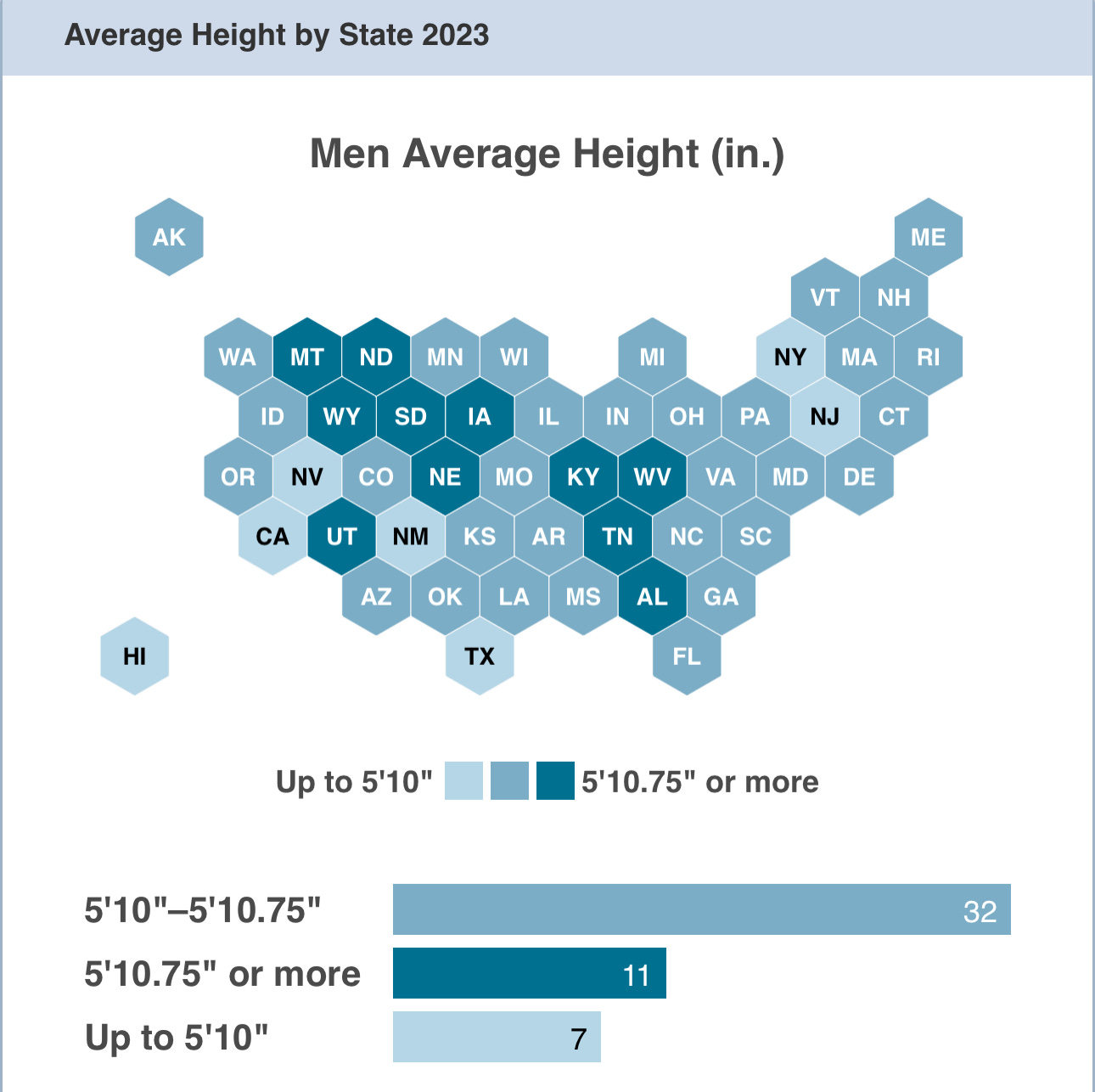How I Explain "A Big Difference" With Old Hip Hop
Welcome to my extremely lame foray into applied mathematics
I don't know what to feel when I look at science. OK, that's a lie; I have a lot of feelings about it. But most people don't. We don't have an automatic sense of the importance of numbers in science. It’s a bit like a world where the answer to the question of “how tall?” Was only answered with the factually accurate—yet lacking detail answer—of “taller.” Perhaps we can look to art to guide us?
The art most relevant is a song. It's not just any song. It's the best rapper. Skee-Lo.
He wishes he was a little taller. It was hard for him.
Skee-Lo is 5'8" tall.
I am 5'8" tall.
Skee-Lo's pain is the pain of all slightly short dudes.
The average height of American males is 5’9”.
There is a difference between being 0.5” taller as opposed to 9” taller. In medicine, this is Effect size1 and is what matters.
Sponsored break from…my day job!
Where Can I Get Help? Radial!
I have a day job—when I’m not writing this newsletter— as the Chief Medical Officer of a company called Radial.
If you (or a loved one) are looking for relief from Depression, OCD, Anxiety, PTSD, Bipolar Disorder, or even a compassionate assessment of depersonalization/derealization disorder, feel free to explore care with Radial.
Radial offers the most advanced mental health care.
Radial has physical locations in Midtown Manhattan, Brooklyn, NY; Myrtle Beach, SC; La Jolla, CA; and more, with additional locations coming soon. We currently provide telehealth services in 22 states and are also screening participants for research trials globally.
Because otherwise, none of what we read makes emotional sense; it just ends up being swirly in our heads. “It has some number thing,” And at best feels scienc-y. On their own, numbers don’t connect with our feelings. I’m arguing for for an equation that converts any clinical trial outcome into immediately relevant and relatable units! This is quixotic.
It takes a little bit of math to get us there. I promise it's worth it.
Standard Mean Difference (SMD) = (Mean of Group 1 - Mean of Group 2) / Pooled Standard Deviation
The pooled standard deviation can be calculated using the formula:
Pooled Standard Deviation = sqrt[((n1 - 1) * sd1^2 + (n2 - 1) * sd2^2) / (n1 + n2 - 2)]
where n1 and n2 are the sample sizes of the two groups, and sd1 and sd2 are the standard deviations of the two groups.
Skee-Lo has that rap song about wanting to be a little bit taller. I believe we should convert all measures reported in science into how much taller it would make you.
To share my conversion factor, the average height of the American male has a standard deviation of 2.5 inches.
Thus, when Skee-Lo wishes you were a little bit taller, and wishes he was a Baller, what he's talking about is a meaningful difference in height. Statistically, 2.5 inches in height is a meaningful difference visually to anybody. So that any medical he converted to height when we're explaining it to anybody.
Here is the math associated with the Muir-Skee-Lo emotionally corrective equation: (M-SLo EQE)
Effect Size in units of Height = SMD of study outcome * Pooled Standard Deviation = sqrt[((n1 - 1) * sd1^2 + (n2 - 1) * sd2^2) / (n1 + n2 - 2)]
Therefore2, you enter the effect size of placebo in antidepressant trials into the M-SLo EQE:
It would make you 2.62 inches taller on its own.
When we look at the impact of antipsychotic augmentation using the same M-SLo EQE Methodology?
It adds 1.07 inches at best.
It is less potent than placebo.3
This is not to say there is “no difference.” The question we answer with “p<0.05” is “is there a difference?”
The M-SLo EQE answers the question “but is it baller difference or what?”
Thanks for reading!
The science term: standard mean difference is an effect size.
If we brush aside the correction factor associated with the correction of bias in the calculation of effect size based on small sample sizes.
Footnote for nerds: Cohen's d and Hedges' g are both measures of effect size for the standardized mean difference between two groups. They are closely related but have a slightly different calculation to account for bias in small sample sizes.
Cohen's d is calculated as:
Cohen's d = (Mean of Group 1 - Mean of Group 2) / Pooled Standard Deviation
Hedges' g is an unbiased version of Cohen's d that includes a correction factor for small sample sizes. It is calculated as:
Hedges' g = Cohen's d * (1 - (3 / (4 * (n1 + n2) - 9)))
Where n1 and n2 are the sample sizes of the two groups.
The correction factor (1 - (3 / (4 * (n1 + n2) - 9))) adjusts for the bias in the estimation of the population effect size when using small sample sizes. For large sample sizes, the correction factor approaches 1, and Hedges' g converges to Cohen's d.
“Why we ever bother to report Cohens d” when hedges G handles the problem better? It is a question I'll allow journal authors to answer.
I'm trying to get to a world where we understand the emotional weight of the units we’re talking about.



I've thought meaningful effect sizes are what people think a significant difference is, and that most scientists prefer that the general public remain deluded.
For the record, from the example, 2.5 inches would be considered a large effect size (as 1SD, from memory, it's yonks since I looked at stats) and something to get very excited about! but I wouldn't think someone who was 2.5 inches taller remarkably taller - maybe 6 inches taller is noticeably taller, but 2.5 inches is just taller enough for me to notice there actually is a difference!
Not lame. Very creative!